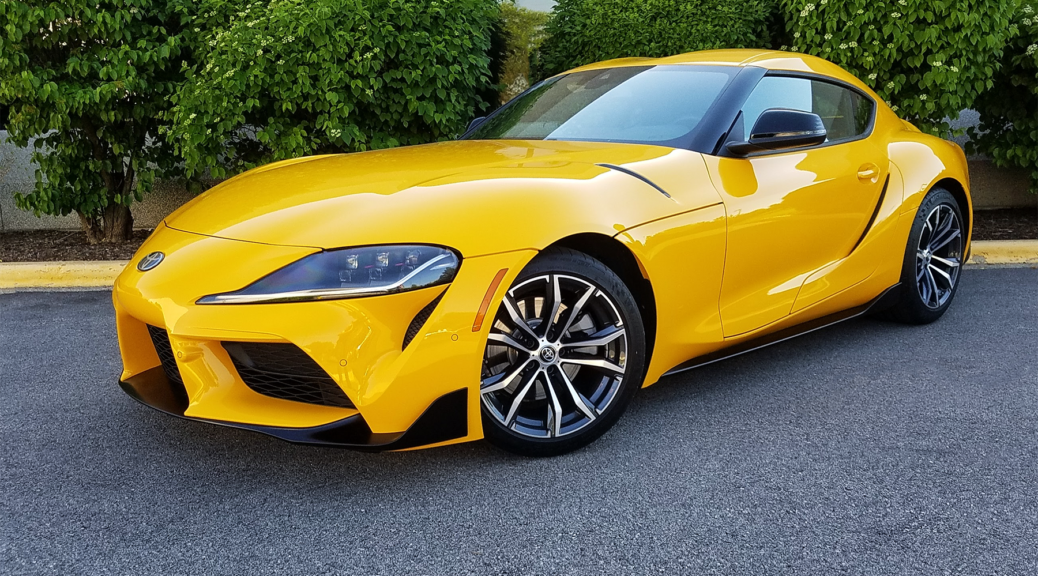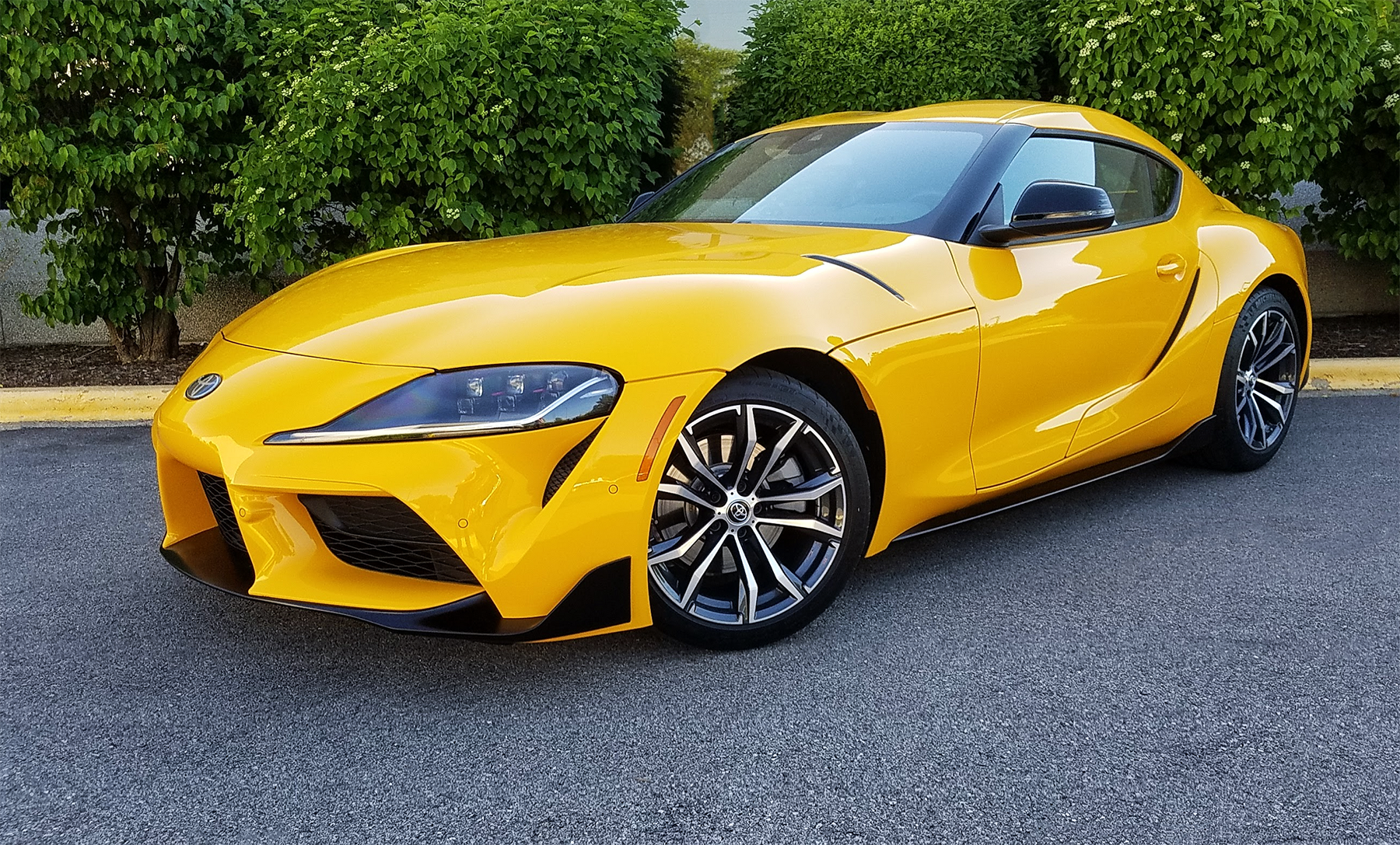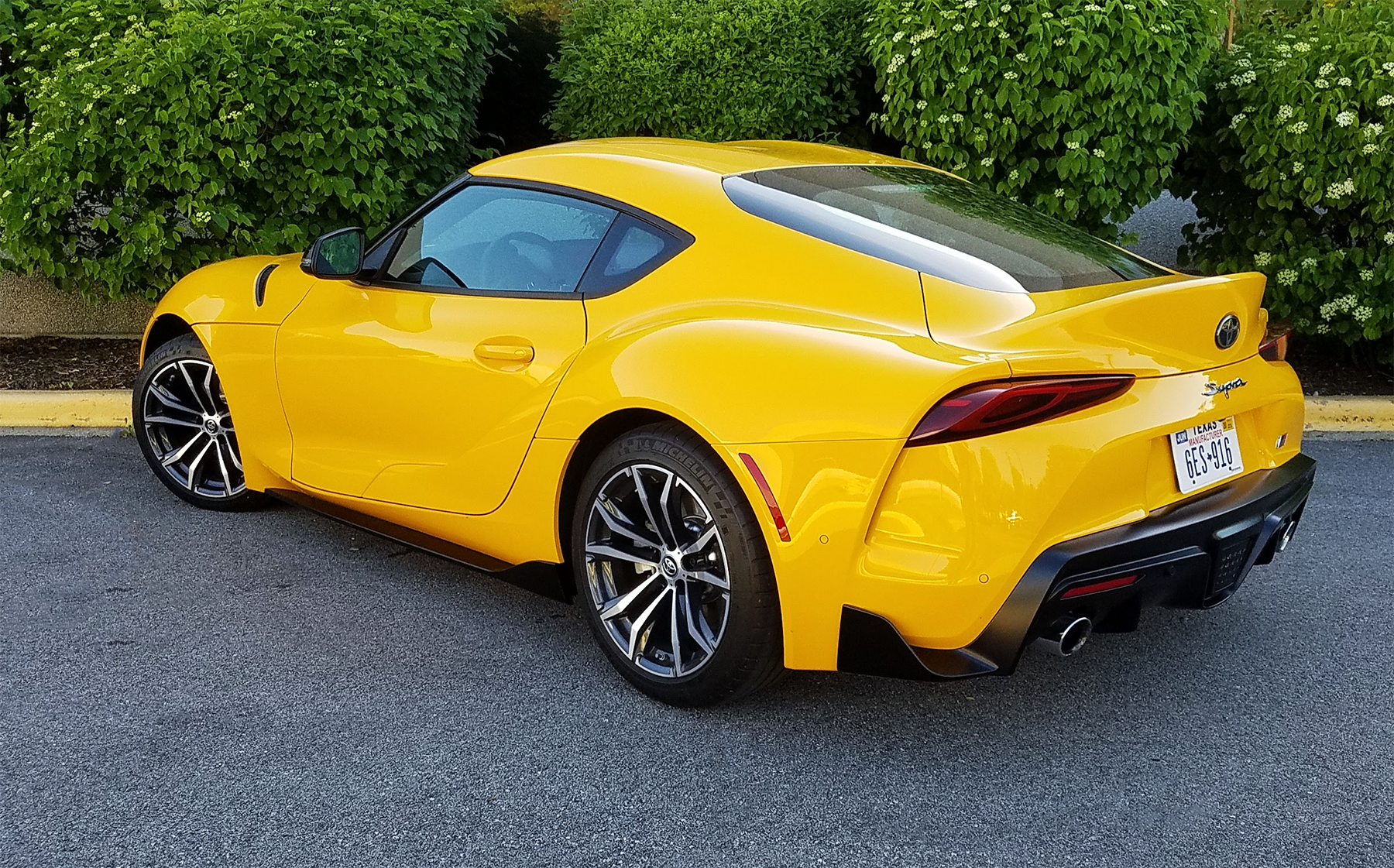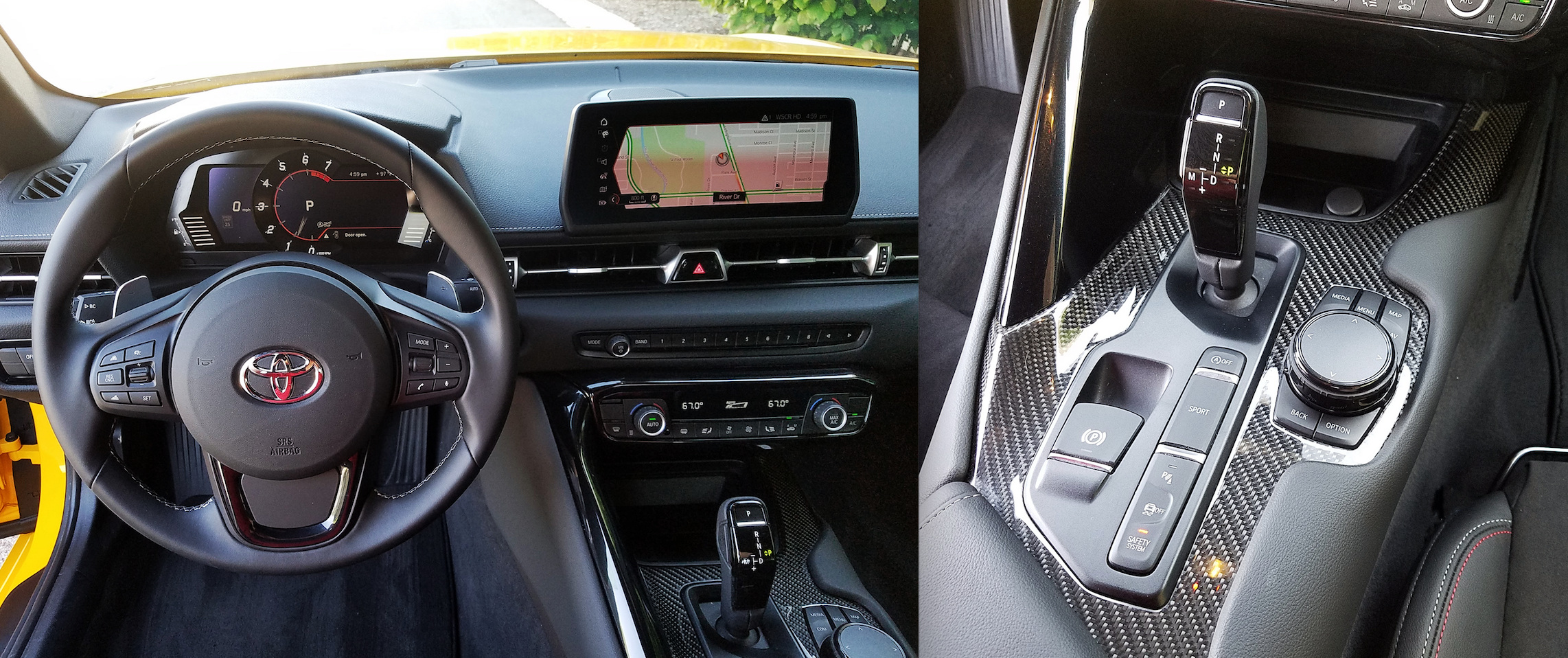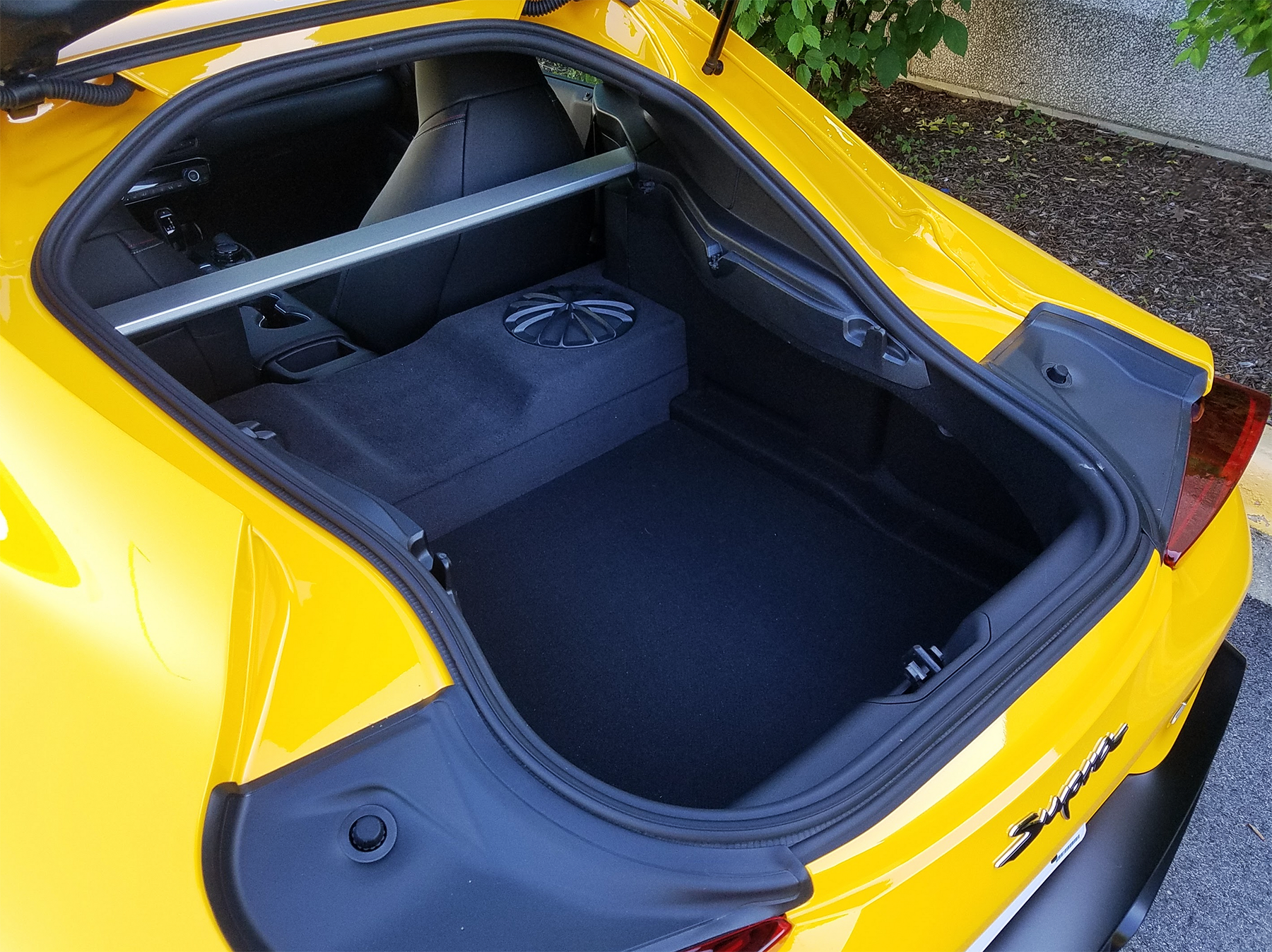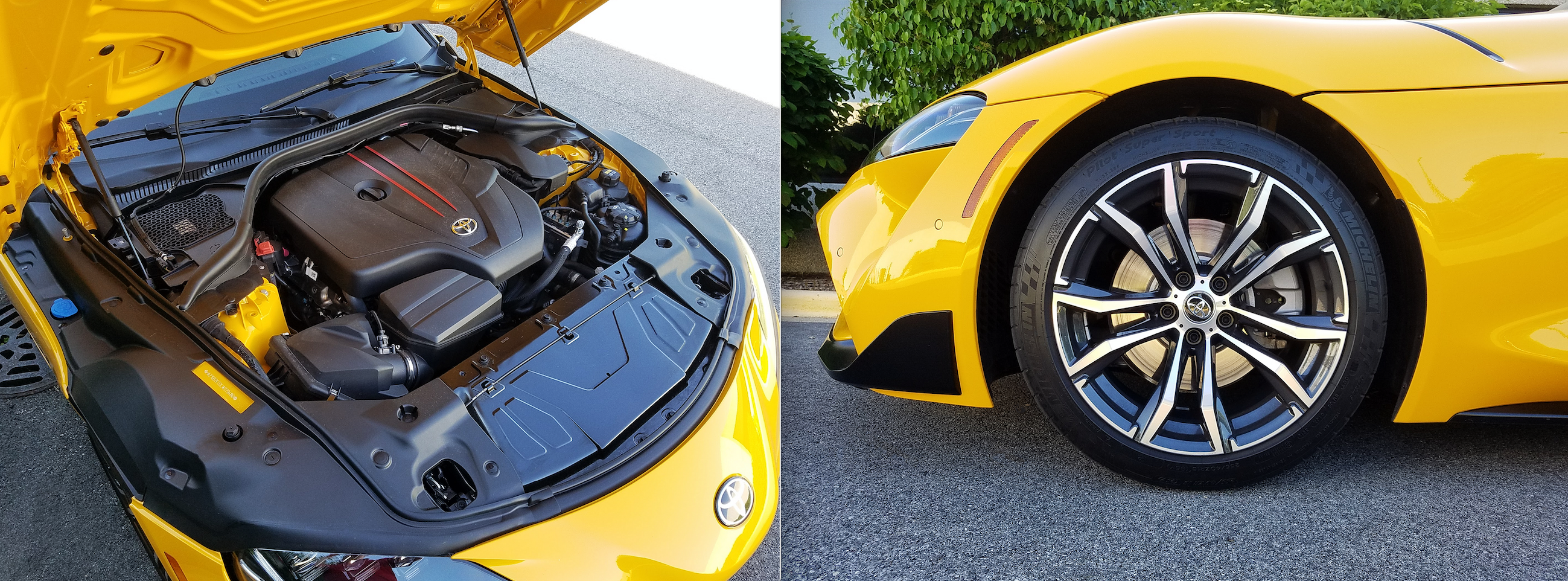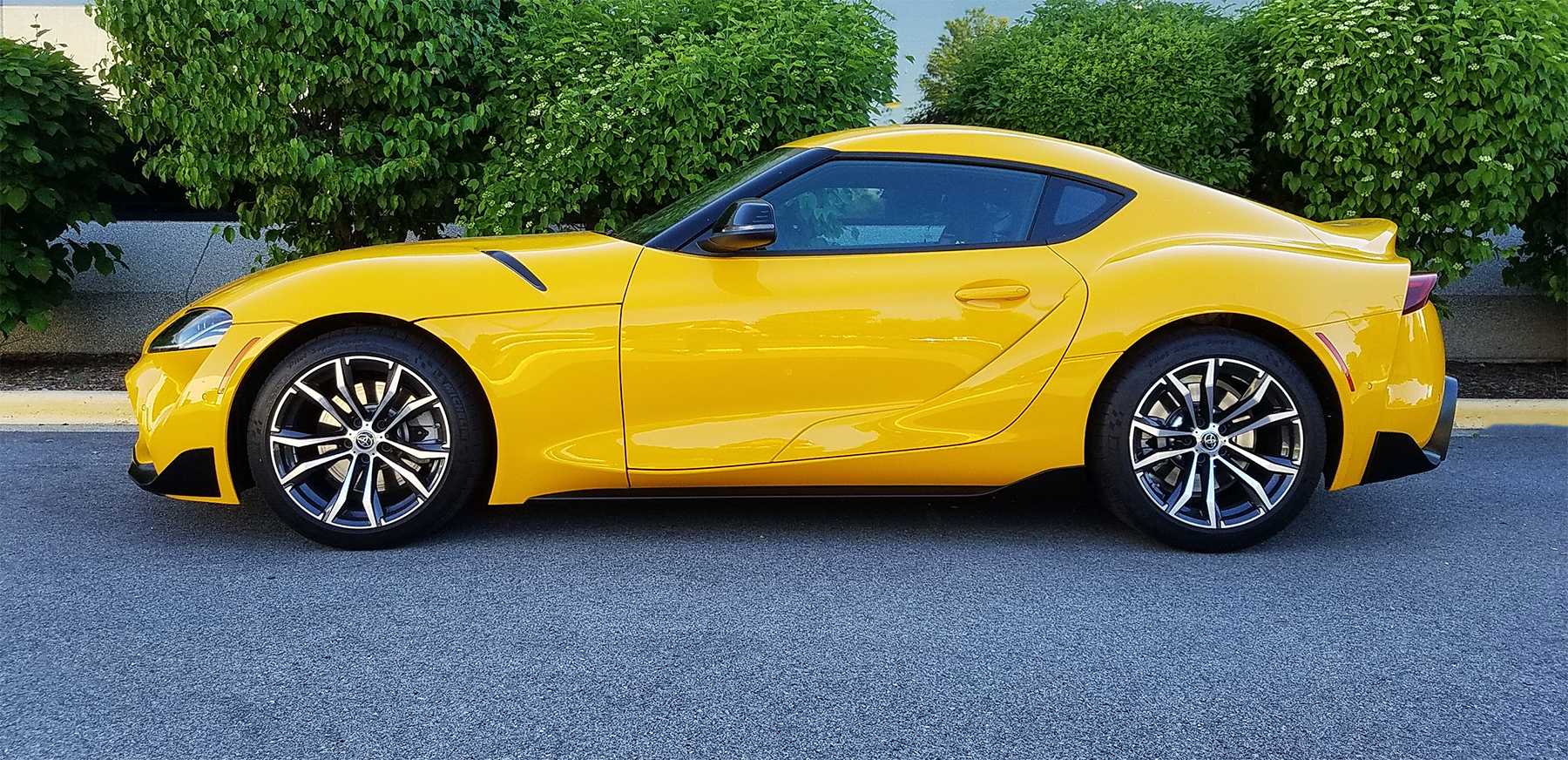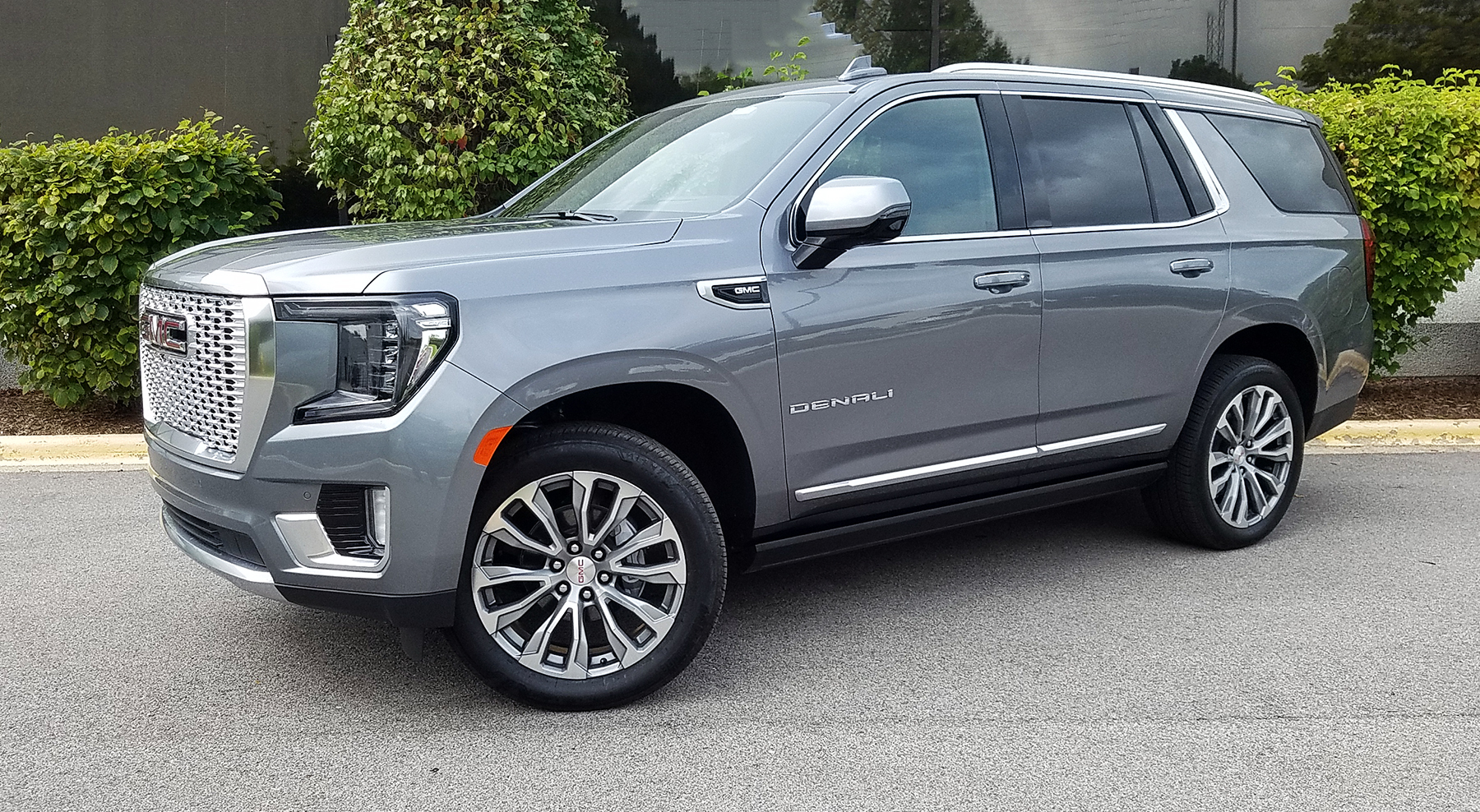
2021 GMC Yukon Denali
Over the past 20 years or so, most SUVs have morphed from a body-on-frame, truck-based construction to become “crossover” SUVs that utilize car-like unibody construction. The upside of this shift in design is better on-road driving dynamics and better driver ergonomics. The downside is reduced towing capacity and diminished capabilities in serious off-roading.
These days, if you want “classic” truck-type SUV construction, your best bet might be to go big. Though the large SUV class is actually small in terms of overall vehicle count, almost all its entrants are body-on-frame vehicles. And General Motors’ whole roster of “big and bigger” full-size SUVs is redesigned for the 2021 model year.
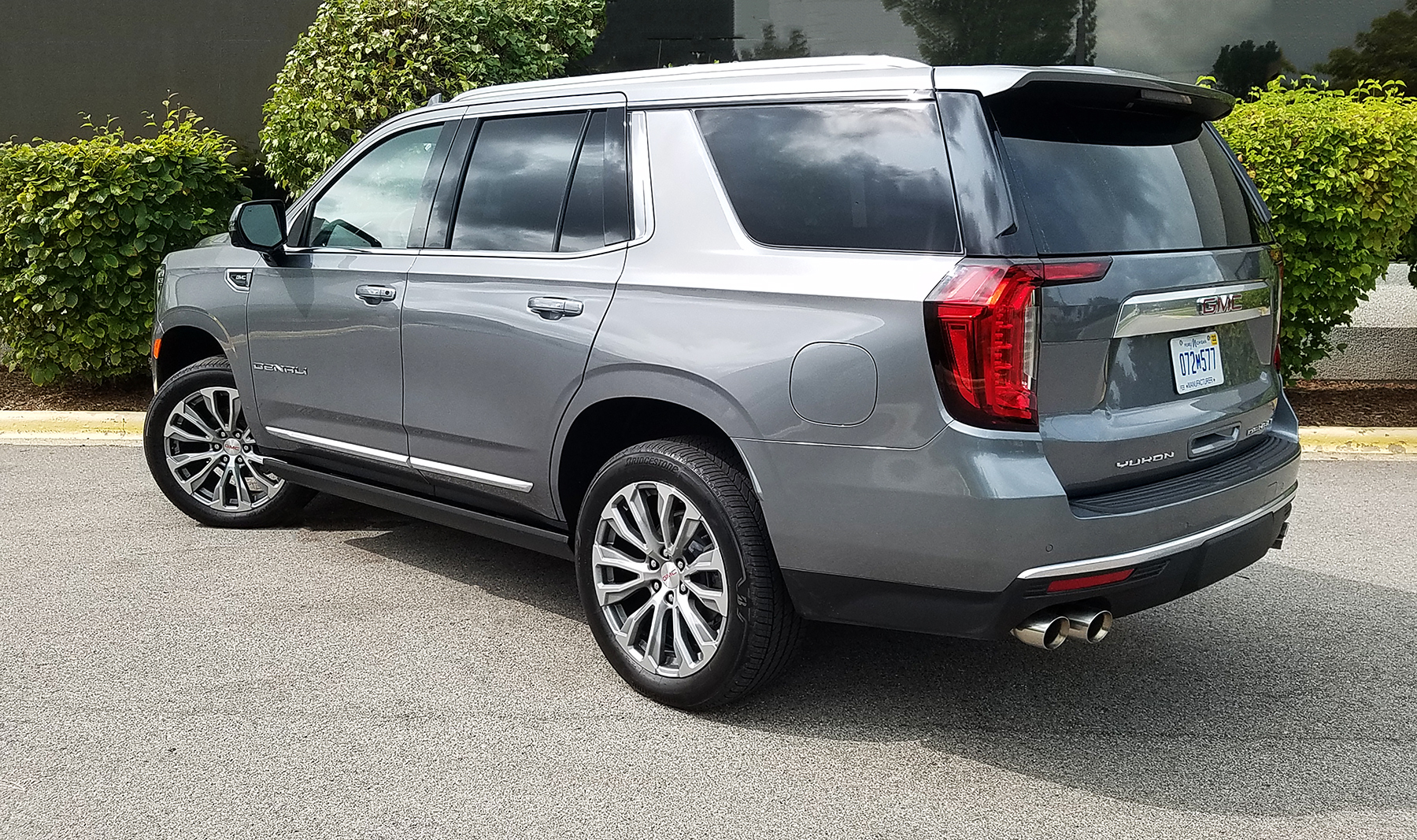
In addition to their unique front-grille design, Denalis come standard with dual exhaust (with dual polished exhaust tips) and a hands-free power liftgate. Satin Steel Metallic paint is a $495 option. In fact, the only color that doesn’t cost extra is Summit White; Onyx Black is $195, most of the other hues are $495, and White Frost Tricoat is $1095.
Our first crack at testing one of GM’s new full-sizers came in the form of a GMC Yukon. If you prefer to go a bit more mainstream market, you can choose a Chevrolet Tahoe or Suburban, and if you want to go full luxe, Cadillac will happily sell you an Escalade or Escalade ESV. (A quick refresher—the Suburban and Escalade ESV are extended-length versions of the standard Tahoe and Escalade models—GMC calls its extended-length model Yukon XL.)
Quick Spin: 2020 Ford Expedition MAX Platinum
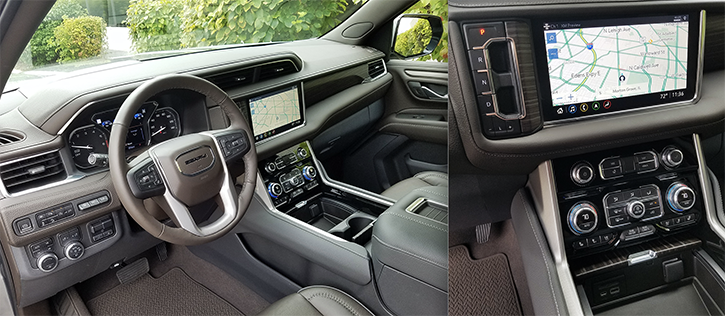
The Denali continues as the Yukon’s most luxurious trim level, and Denalis get their own dashboard design that’s distinct from other Yukon models. All Yukons get a new gear selector for ’21–an unconventional pushbutton/”pull-button” setup that is mounted on the dash to the left of the infotainment touchscreen. Our testers found it easy and intuitive to use.
Large SUVs are rather pricey vehicles, and the GMC Yukon is no exception. The base GMC Yukon SLE model starts at $50,700 with rear-wheel drive, and the top-line regular-length model—the 4×4 Denali—starts at $71,400. Regardless of trim level, choosing a Yukon XL over a standard-length model tacks on a $2700 premium, and selecting 4-wheel drive over rear-wheel drive adds $3K to the bottom line. The new-for-2021 Yukon AT4 is a premium off-road model that comes standard with 4WD, as well features such as an active-response 4WD system, two-speed transfer case, and a rugged front fascia (with integrated red tow hooks) that enables a better approach angle for off-road obstacles.
First Look: Jeep Grand Wagoneer Concept
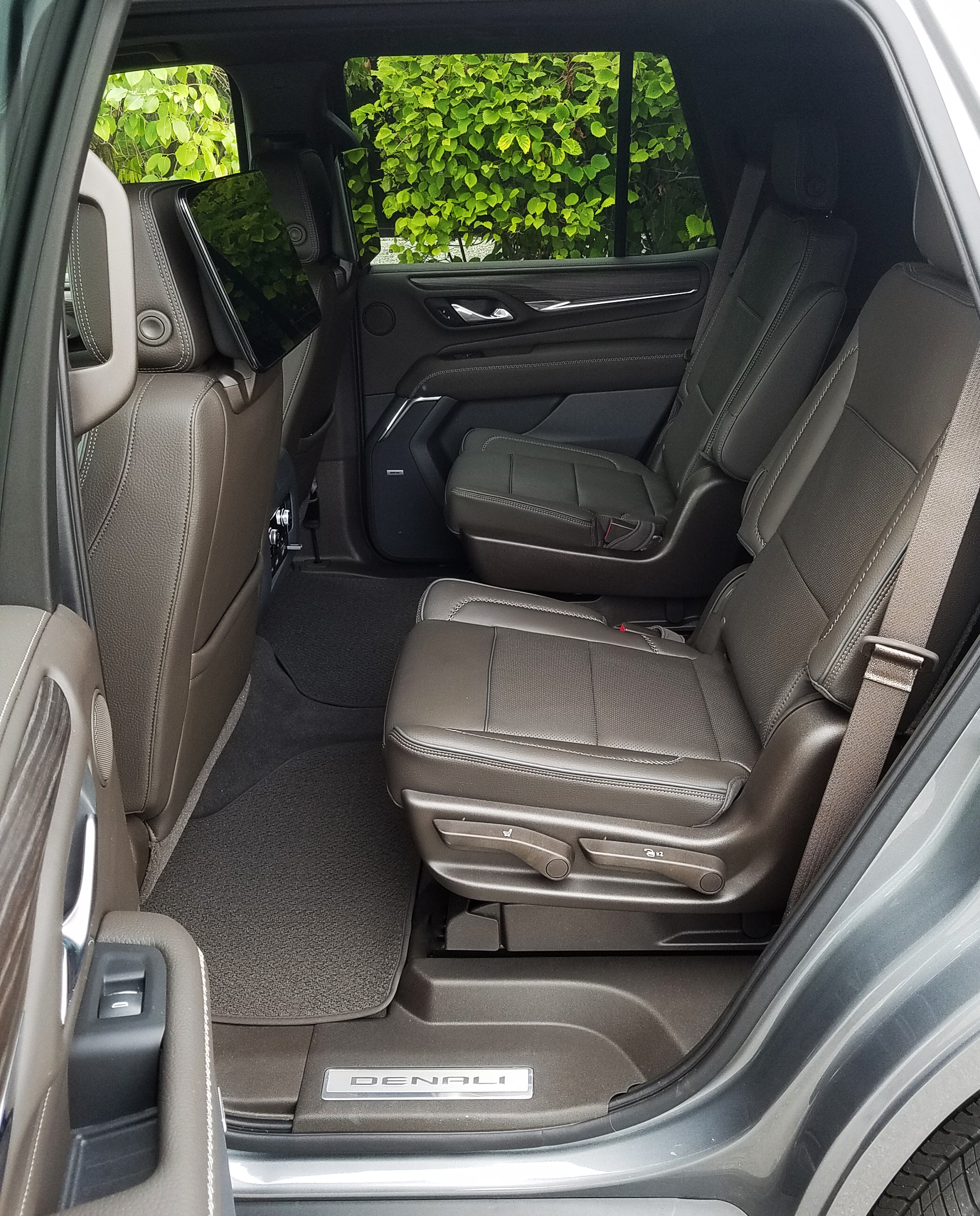
There’s generous legroom in the Yukon’s second-row seats, which slide fore and aft up to five inches (they’re shown all the way back here). Included in the Denali Ultimate Package is a rear-seat entertainment system with dual rear 12.6-inch HD LCD touchscreens built into the front seatbacks.
Our test vehicle, however, was a flagship model—a regular-length 4WD Denali that was loaded up to a total MSRP of $83,720 via the Denali Ultimate Package ($11,180), Satin Steel Metallic paint ($495), and the novel power-sliding floor console ($350). The price tag of the Ultimate Package is an eye opener to be sure, but it includes LOTS of equipment: a rear-seat entertainment system with dual 12.6-inch LCD touchscreens, power-retractable assist steps with perimeter lighting, power dual-pane panoramic sunroof, 22-inch bright machined aluminum wheels, electronic limited-slip differential, air-ride adaptive suspension, adaptive cruise control, advanced security package, rear camera mirror, and a rear camera mirror washer. The Ultimate Package also beefs up the Denali’s towing capabilities by adding an enhanced cooling radiator, ProGrade Trailering System, trailer-side blind-zone alert, Hitch Guidance with Hitch View, an in-vehicle trailering app, and a trailer brake controller.
The Yukon’s standard engine is a 5.3-liter V8 that makes 355 horsepower and 383 pound-feet of torque, but Denalis get a significant upgrade in the form of a standard 6.2-liter V8 that puts out 420 hp and 460 lb-ft of torque. Set to join the powertrain roster later in the model year is a new 3.0-liter Duramax turbodiesel 6-cylinder engine that makes 277 hp and 460 lb-ft of torque. All three engines are paired with a 10-speed automatic transmission.
As expected with 420 hp on tap, the Denali’s acceleration is confidence-inspiring, and the transmission’s shifts are subtle and smooth. There’s a satisfying V8 rumble from the engine, but it’s subdued enough to not be intrusive. Speaking of unobtrusive, the engine’s fuel-saving auto stop/start feature is laudably smooth.
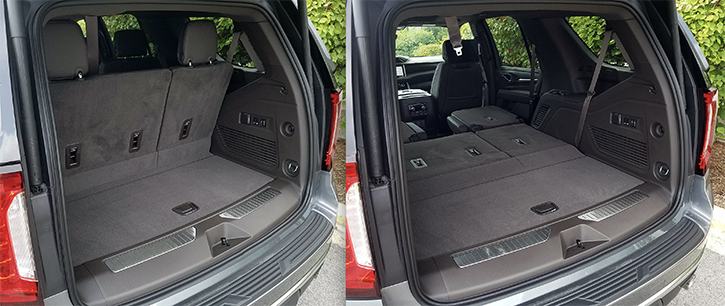
The Yukon’s cargo room gets even better for 2021, thanks to a 6.1-inch stretch in overall length. There’s 25.5 cubic feet of cargo space behind the third-row seats, 72.6 cu. ft. behind the second row, and 122.9 cu. ft. behind the first row.
On the highway, wind rush is very well controlled. Road noise is a bit more noticeable, but it’s decently muffled as well. Ride quality is also quite good, thanks in no small part to the new 4-link independent rear suspension setup that replaces the previous live rear axle design. AT4 and Denali models come standard with GM’s Magnetic Ride Control suspension; the optional adaptive air suspension also includes the magnetorheological suspension dampers and seemed to counteract the ride quality penalty of the plus-sized 22-inch wheels on our test vehicle. The ride is absorbent, but not quite pillowy-soft; there is a minor wheel patter over sharp bumps, and also a little suspension noise over broken pavement.
Test Drive: 2020 Infiniti QX80 Limited
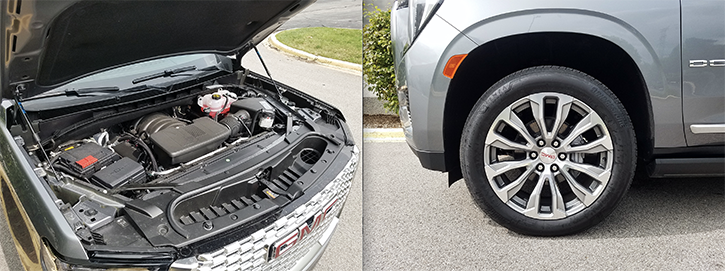
As with the previous-gen Yukon, Denalis come standard with more muscle than the rest of the Yukon lineup: a 6.2-liter V8 that puts out 420 hp. Twenty-two-inch bright machined aluminum wheels are part of the Denali Ultimate Package.
The steering is nicely balanced—quick enough to be responsive in close-quarters maneuvering, but “relaxed” enough so that frequent corrections in highway cruising aren’t necessary. Brakes have a firm and progressive pedal feel and the binders effect quick and secure stops. The sheer size of these SUVs—the 2021 Yukon is 6.1 inches longer overall than its already-large predecessor—means they can be a handful in parking lots and other tight spaces, but all things considered, our test Denali was quite tractable for its size and heft. The numerous available driver-vision aids help too—up to nine camera views are available, including a 360-degree surround vision view (standard on the Denali), front and rear side views, a hitch view for hooking up a trailer, and a rear camera mirror. That last feature comes in handy if your view through the rearview mirror is blocked by passengers or cargo—flip a switch under the mirror, and it activates a video-screen display of a rear-mounted camera.
The Yukon’s newly expanded dimensions pay dividends in terms of interior space. GM says the upsizing has netted 41 percent more legroom in the third-row seats, and 66 percent more cargo volume behind the third row. There’s 25.5 cubic feet of space behind the third row, 72.6 cu. ft. behind the second row, and 122.9 cu. ft. with both the second and third rows folded. Those numbers easily beat the regular-length Ford Expedition, and compare pretty well with the Ford Expedition MAX extended-length version, which offers respective measurements of 36.0, 79.6, and 121.5 cubic feet.
Test Drive: Lincoln Navigator Reserve

The available rear camera mirror enables the driver to switch from a normal rearview mirror (above) to a video-camera display (below) at the flip of a switch, for a rear view unblocked by headrests, passengers, and/or cargo. A power-sliding center console is a $350 option. It includes a supplemental slide-out drawer (shown open here) that is hidden and inaccessible (thus, essentially locked) when the console is in its forward position.
The Yukon’s cargo floor is large and flat—albeit with a gap between the middle-row seats—when the second- and third-row seat backs are folded. Handy switches on the right side of the cargo hold permit remote raising and lowering of the third-row seats, and folding of the second-row seats. However, manipulating the second-row seats—whether to fold them, raise them, or slide them—is less than fingertip-easy; it takes a fair amount of effort.
Occupants of the first two seating rows settle into soft, comfortable perforated-leather seats (seat backs aren’t as cushy in the third row). There’s standard heating for the steering wheel and first two seating rows—plus ventilation for driver and front passenger. In addition to its added overall length, the Yukon gets a 5-inch stretch in wheelbase, which notably improves legroom in the both the second- and third-row seats. The second-row seats also slide fore and aft up to five inches for additional legroom/cargo-room versatility. With the seats all the way back, there’s lots of legroom for middle-row passengers, and the standard bucket seats on which they sit have backs that recline pretty far—sleepyheads who tire of the optional rear-seat video system will be able to settle into nap mode like nobody’s business. There’s respectable room for two adults or three kids on the 60/40 third-row seats, but big roof C-pillars that get wider toward the bottom reduce the outward view from the back row.
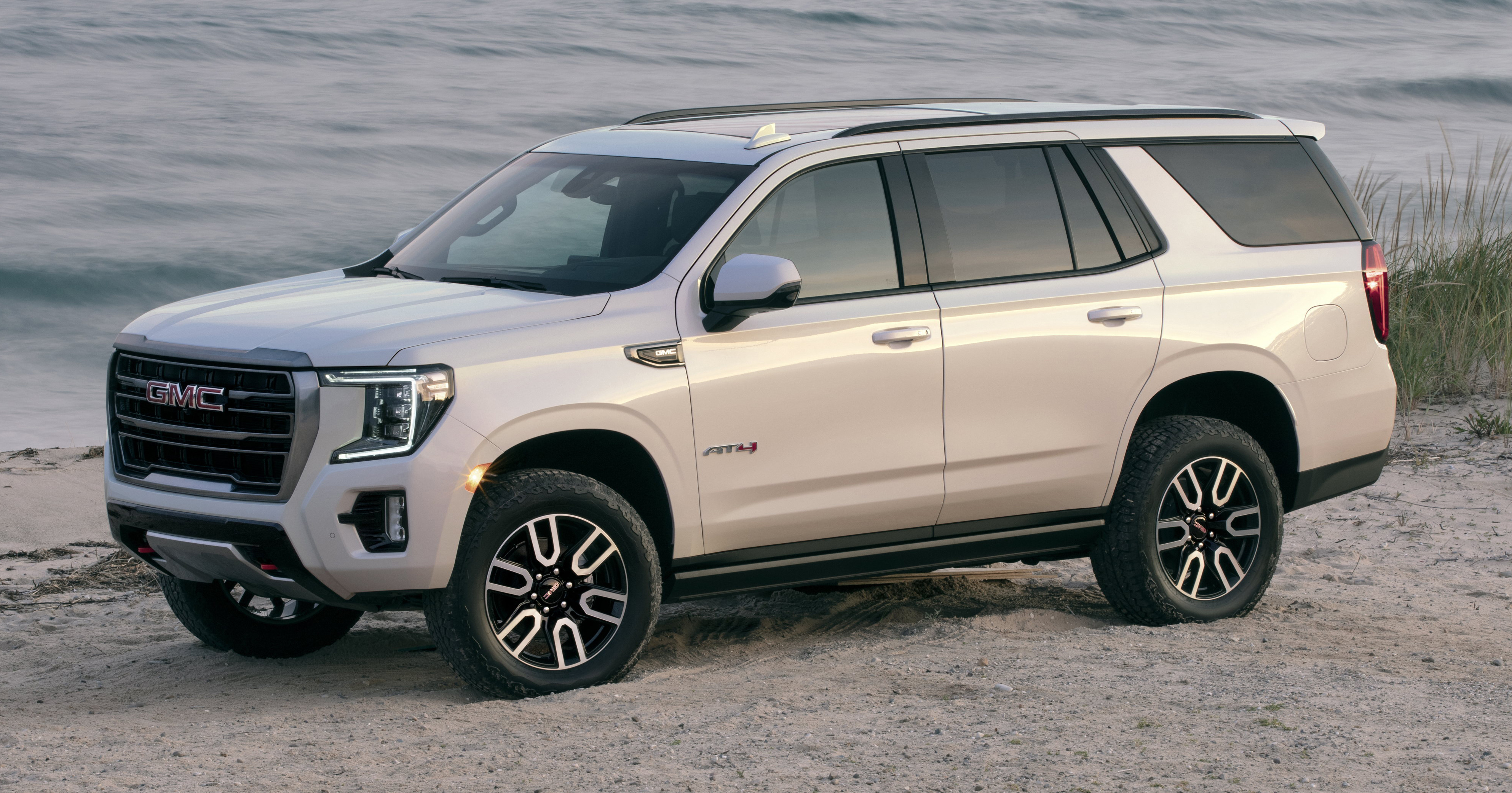
New to the Yukon lineup for 2021 is the AT4, a premium off-road model that comes standard with upscale features and off-road gear such as an upgraded 4WD system and a unique front fascia with integrated tow hooks.
Denalis get an exclusive dashboard layout that is not shared with other Yukons. The Denali dash eschews the other Yukon models’ “tablet stuck in the dash” look; its touchscreen is mounted lower in the dash, underneath the HVAC vents. Even though we haven’t yet tested a non-Denali Yukon yet, we’ll likely prefer the Denali arrangement, since oftentimes lower-mounted vents end up blowing air directly on our right hand on the steering wheel. On all models, the new Yukon’s unconventional gear selector is shared with the new Chevrolet Tahoe and Suburban; it’s a vertically oriented setup that uses push buttons for Park and Neutral, and pull switches for Drive and Reverse. Our testers acclimated to it quickly, and it also frees up space in the center console.
Tech standards in the Denali include a multicolor head-up display (that unfortunately almost disappears when viewed through polarized sunglasses); 14-speaker Bose audio system; GMC Infotainment system with 10.2-inch touchscreen, navigation, in-vehicle apps, and Apple CarPlay/Android Auto smartphone compatibility; and wireless charging. There are twin levels of storage bins and pockets in all the doors, and a large covered console box. The optional power-sliding console is handy in that it tracks back to expose a big tray that would be handy for holding a purse, and also includes a “hidden” storage drawer that is essentially locked when the console is in the forward position. However, the power console-bin tracking is activated by pressing and holding an overhead switch; it would honestly be quicker and easier if it were a simple spring-loaded manual release.
Car Shopping Tips: Test Drive Checklist
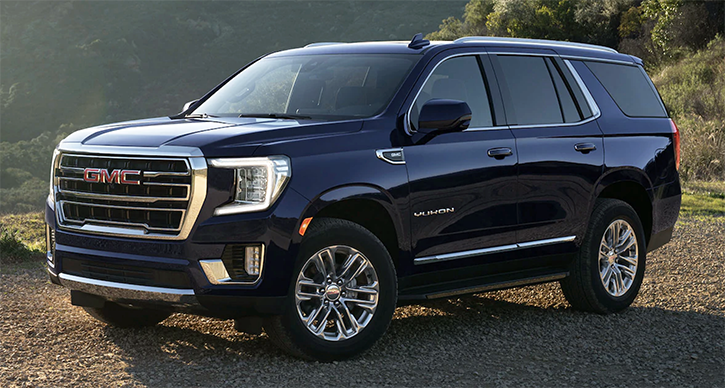
The mid-line Yukon SLT model starts at $59,095 with 2WD or $62,095 with 4WD; it comes standard with 20-inch polished aluminum wheels, wireless charging pad, heated/ventilated front seats, and a Bose 9-speaker stereo.
In terms of overall interior ambiance, the 2021 Yukon Denali is a definite step up from its predecessors, but the Cadillac Escalade, BMW X7, (or, for that matter, the higher trim levels of the Ram 1500 pickup) have no need to worry. There are a good number of padded, soft-touch materials, even on the sides of the center console, but also some cheaper-looking hard plastic, and a couple of so-so panel gaps on the dash.
Though our limited time with our test vehicle meant that we couldn’t do our normal range of fuel economy testing, we did average 17.8 mpg on a single fuel-tank fill of 6.9 gallons after a 123-mile drive in an even split of city/highway driving. Our number is on par with the Denali’s EPA-estimated mpg ratings of 14 city/19 highway/16 combined. Not great, but not bad for a 4WD full-size SUV with a big-displacement V8.
If you’re already stepping up to a vehicle this large, however, fuel economy might not be at the top of your list of criteria. By the standards of its class, the new Yukon shines, and we’ll wager that the redesigned Cadillac Escalade and Chevrolet Tahoe/Suburban are similarly attractive.
Quick Spin: 2020 GMC Sierra 1500 AT4 Diesel
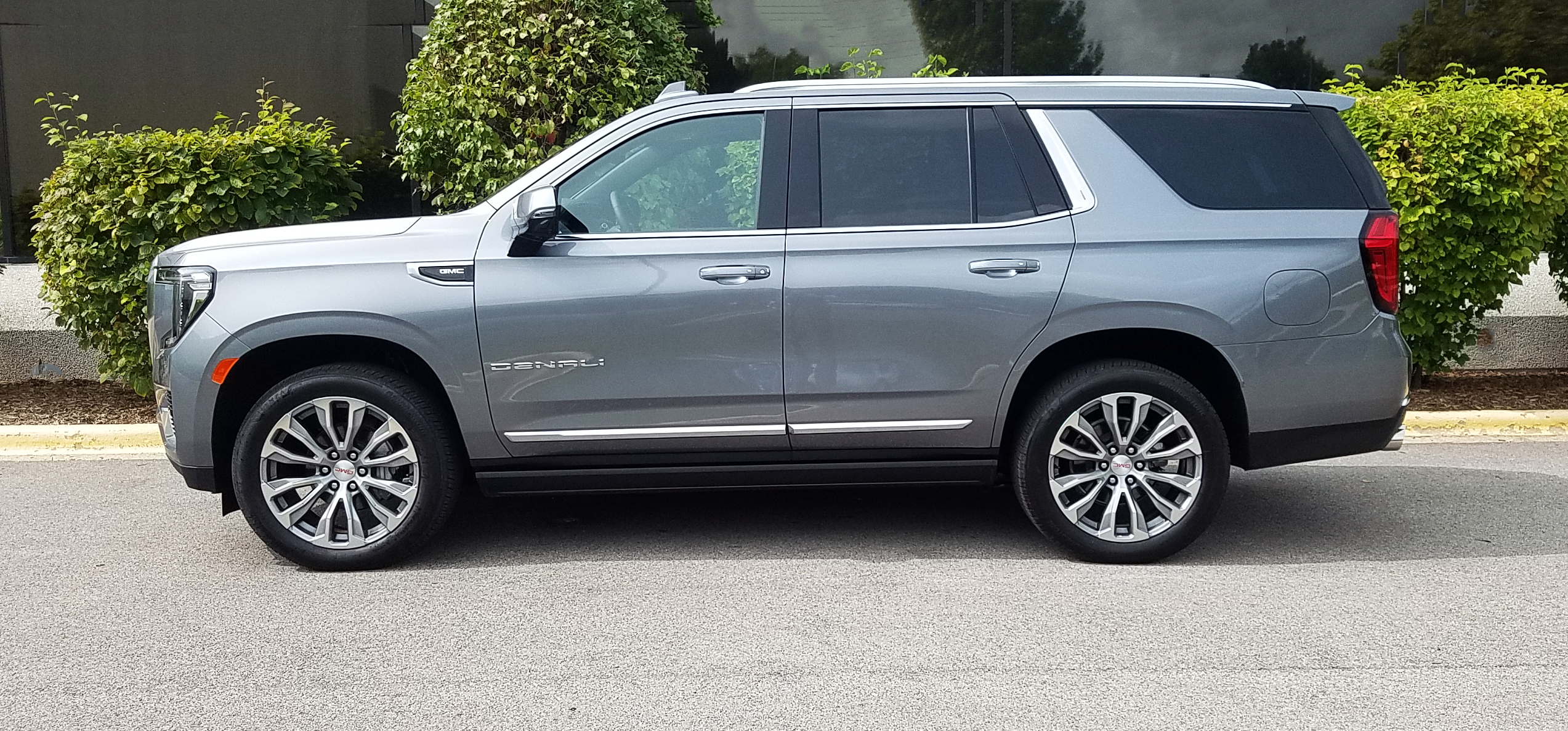
With its redesign for 2021, the GMC Yukon lineup gets more spacious and more refined. It also gets a host of desirable new features, a more-luxurious Denali model and an AT4 model that should please off-road intenders.
Click below for enlarged images.
Listen to the very entertaining Consumer Guide Car Stuff Podcast
2021 GMC Yukon Denail Gallery
2021 GMC Yukon


